Are you searching for ideas for educational toys for your preschooler?
It can be a little overwhelming sifting through what is basically just lots of catalogues from online toy stores.
Are these items really educational or just bestsellers?
This is not that kind of article. I have written this for parents, with the purpose of explaining what kinds of toys a typical preschooler will really benefit from and learn from. Some of these toys don’t even need to be bought – you can make them or improvise with other items.
How have I defined an educational toy?
It must develop a specific skill or multiple skills. The kinds I am talking about are:
- Motor skills
- Concentration
- Problem-solving
- Language and vocabulary
- Thinking
- Early mathematical skills
- Pre-reading skills
These are also the kinds of toys you will find in a typical preschool classroom. If it isn’t usually found in a classroom, it’s probably not really that educational.
This means far less gimmicky items; less flashing lights and batteries; less computer ‘learning’ programs; less developmentally inappropriate learning aids and less pre-planned crafts-in-a-box.
It also means more regular, old-fashioned toys that children still learn from.
So, here goes…
What are the Best Educational Toys for Preschoolers?
Here are some of the best learning resources for young kids:
1. Wooden Blocks
One of the best investments you can make is to buy a good set of wooden blocks that your children will use for years.
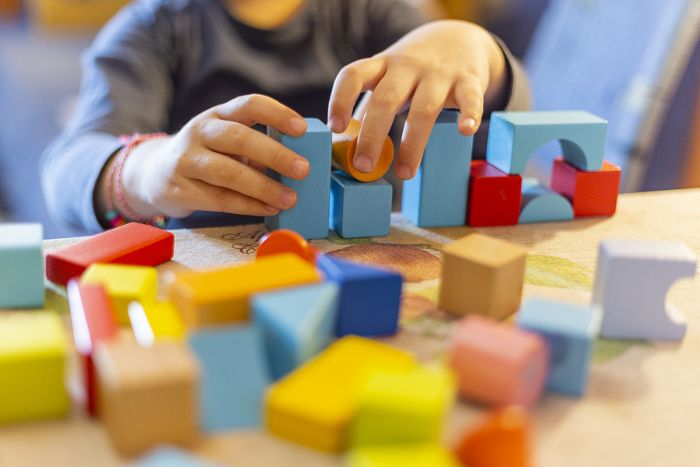
They should be large blocks in various shapes, with flat and round edges.
Little alphabet blocks or small foam or plastic blocks can also be fun but will never provide the same educational value as a proper set of blocks. Your children are never going to learn the alphabet from blocks!
Blocks are great for so many reasons:
- Children build cognitive skills as they progress through the stages of block play.
- Blocks build fine and gross motor skills as they require a combination of using the small muscles as well as using large muscles for bigger constructions.
- Block play leads to fantasy play (building a castle can lead to acting out related scenes, especially if you add props such as figurines or a dragon).
- Spending time becoming engrossed in construction builds concentration span over time.
- Building develops creativity, imagination and problem-solving skills.
- Playing with blocks develops pre-mathematical concepts. A simple activity such as building towers develops skills such as learning the value of a number, comparing numbers (more, less), sizes, lengths, etc.
2. Puzzles
Puzzles are another kind of activity that builds multiple skills. Every young child absolutely must have exposure to them at home.

Puzzles develop fine motor skills and sharpen hand-eye coordination. Large floor puzzles work on gross motor skills, including crossing the midline – crossing over to the left side of the body with the right arm and vice versa.
They teach children to concentrate and persevere on a task until it is complete.
They also encourage thinking and problem solving as they are challenging and, by their nature, need to be solved to be completed.
My favourite benefit your children will derive from building them is that they are excellent for developing visual perception – a vital pre-reading skill.
As with blocks, the best kinds of puzzles are wooden and sturdy.
Here’s some info on why puzzles are important for development.
3. Pegboards
Pegboards are one of the best activities to target fine motor skills. You can buy bigger pegs for toddlers but preschoolers should be able to handle the standard small pegs.
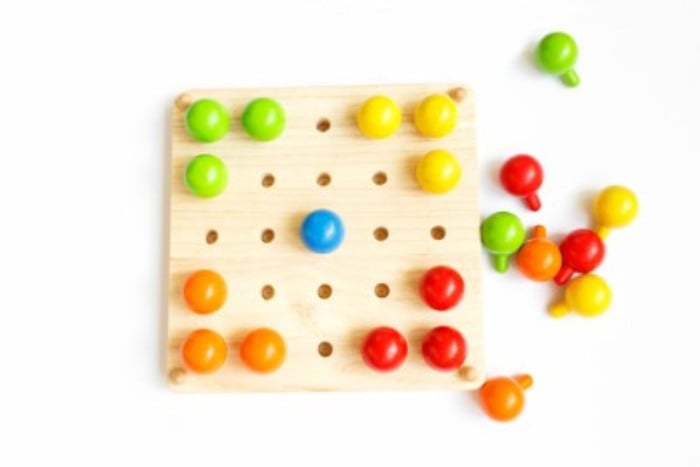
Placing pegs into the holes is an intricate exercise that requires a lot of focus and will exercise and teach the finger muscles to control an object – which will later help to control a pencil when writing. It also develops hand-eye coordination.
Children love playing with pegboards as they are a different kind of creative expression. Instead of drawing, they are able to create images with the pegs.
Most pegboard sets also come with pattern cards which children must follow to recreate the pattern. This is another way of developing visual perception.
4. Threading and Lacing Toys
Threading and lacing are activities that are encouraged regularly in preschool. They require a lot of fine motor control and are therefore good pre-writing practice.
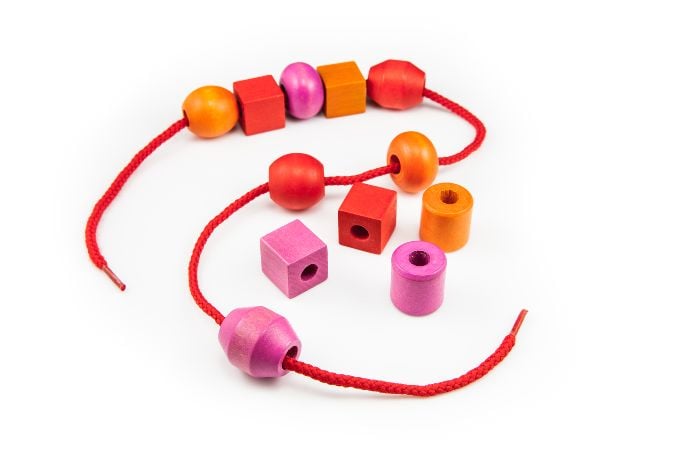
If you’d like to teach your children to write, the only way to start is with these kinds of activities. Children must do regular fine motor activities during preschool to develop the control to write.
What is the difference between the two? Threading requires stringing beads or other objects with a hollow centre onto a string or thread, but you lace by weaving the string or thread into and out of holes (as you would a shoelace).
Here are two simple ways to do this at home:
- Threading – make a macaroni necklace.
- Lacing – weave a string around a paper plate with holes punched in it.
Here are some excellent fine motor skills toys you probably already have at home and don’t need to buy.
5. Memory Card Games
Memory card games are one of my favourite activities. If you don’t have a set of cards at home, this is a game you can make by printing or drawing small pairs of pictures on small cards (each picture must have an exact copy).
You can also get your own set of printable memory card games here:

This is how you play:
- It is best played with two players, but more is also ok.
- Shuffle both sets of pictures and lay them all face down on the table.
- Take turns choosing two cards each and turn them face up.
- If the cards match, you keep them.
- If they don’t match, you turn them both face down.
- Continue turning two at a time until all the cards have been matched.
- The winner is the person who has accumulated the most matching sets.
Aside from building memory, this kind of game also develops other skills.
Games build a child’s social skills and ability to cooperate and follow set rules. They develop a child’s decision-making skills. And any game that has a child sitting for a period of time has a positive effect on their attention span.
6. Dress-up Clothes and Props
These are the kinds of toys you can end up spending a lot of money on, unnecessarily. Imaginative play – also called fantasy, symbolic, dress-up or pretend play – is essential for a child’s development and should be encouraged by providing dress-up items and props.
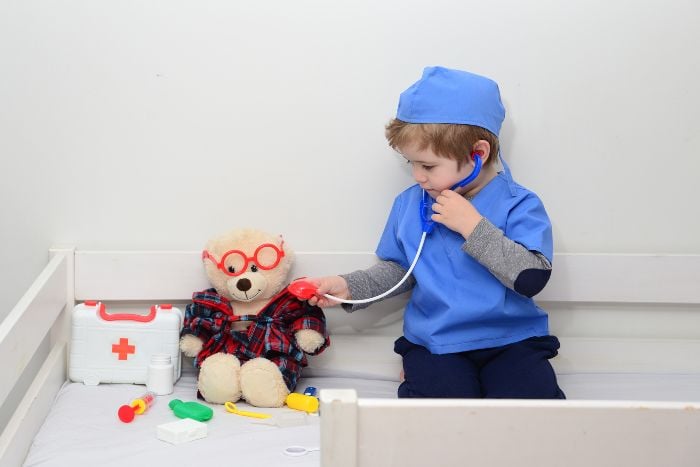
Children learn about their world and express themselves when engaging in symbolic play. It is also when they build their language and vocabulary.
There are many great props available, such as kitchen sets, dollhouses, dress-up sets, etc. These are certainly educational, however, take it a step further and provide your children with props that will spark their imagination and get them to think and be creative, using the materials they have.
True symbolic play is actually when a child uses an item to represent another and is a more advanced form of play than playing with a toy that has a clear purpose.
An example is using a block to represent a phone, instead of playing with a toy phone, or making a doll’s house out of a cardboard box.
You can encourage this play by offering a variety of props such as a scarf, rain boots, an interesting hat, a wand (or a regular stick), etc.
Ideally, it would be great to have an area in a bedroom or house, especially for dress-up props, that your children will often revisit. Separate areas can create a positive learning environment at home.
7. Construction Toys
Aside from having a good set of blocks, children should also have other kinds of construction toys at home.
Things that link, stack, fit together, hook together, or are magnetic are all types of construction toys.
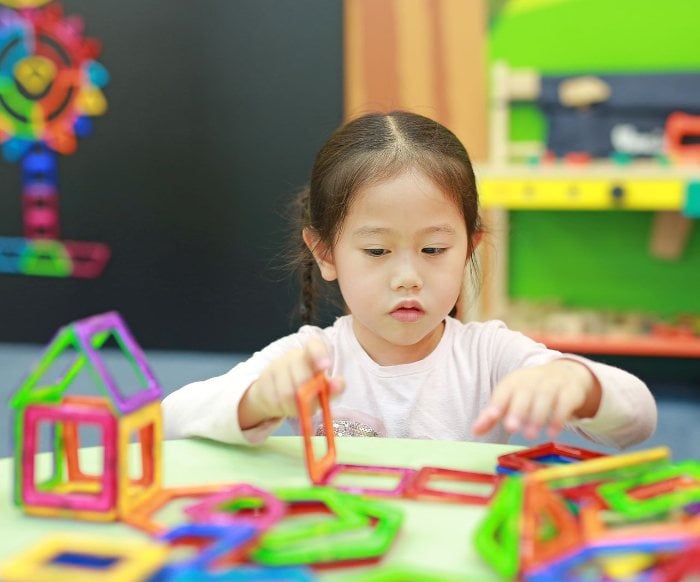
These toys develop:
- Early technology skills
- Creativity and imagination
- Problem solving
- Fine motor control
- Hand-eye coordination
- Gross motor control
- Attention span
- Thinking skills
- Vocabulary
- Visual perception
- Early mathematical skills
Regular Lego is one of the best kinds.
8. Musical Instruments
Children learn through musical activities and should be encouraged to play with instruments regularly.
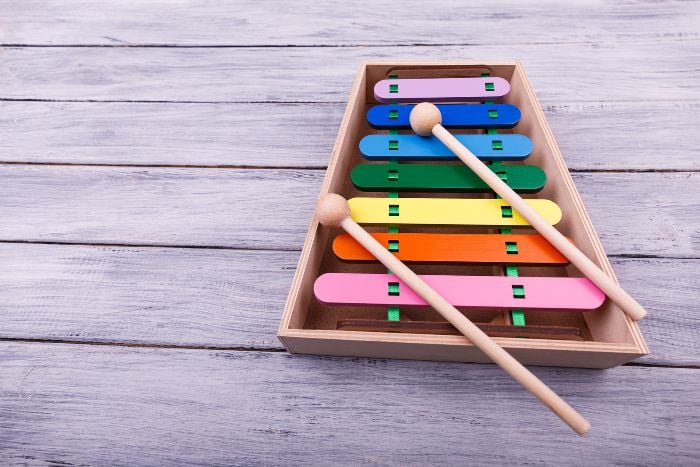
These can be bought but can also be made during creative art activities. Simple instruments like shakers or bells can easily be made.
Some can also be improvised – such as using pot lids as cymbals or using a bowl and wooden spoon as a drum.
Musical activities teach children about rhyme, rhythm, syllables and sounds. They develop a child’s auditory perception – one of the most important pre-reading skills.
Here are some music games to play with your children.
9. Games
The more children play with technology-based toys, the less they seem to have exposure to regular games.
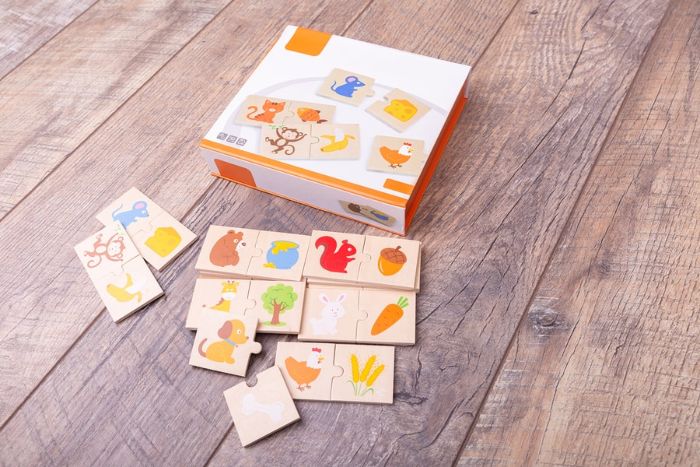
Games that you find in a box – board games, sequencing cards, matching games, etc – are so important and educational for young children.
(Get your own set of printable sequencing cards, memory games and lotto games here!)
As you can see from most of the toys listed in this article, they develop a multitude of skills, and games are no different. In fact, the best kinds of toys work on motor, social and cognitive skills at the same time.
Emotional development is important too. Playing with a game can be very stress-releasing, not to mention rewarding when completed, which leads to a child’s overall feelings of success and competence.
10. Active Outdoor Toys
Outdoor toys do not have to be complicated or expensive.
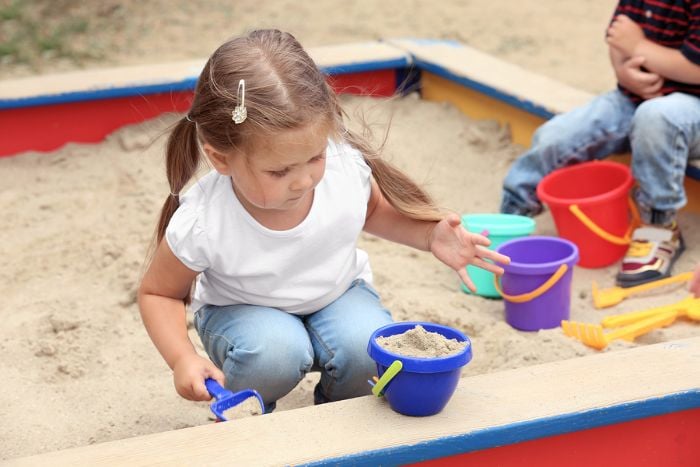
There is huge value in anything that gets your kids outdoors such as wooden wagons, carts, balls, bats, beanbags, tricycles, balancing beams, containers or buckets for water and sand play, gardening tools, skipping ropes and hula hoops, etc.
Active play is the most important thing a preschooler should be spending their time on.
The more active your children are, the more they will learn.
And that’s it. Your preschoolers are not yet ready for formal learning but are also old enough now to play with some really stimulating items.
There is still a place for technology-based toys – we live in that world after all – but don’t throw out all the regular ones as they are vital too.
I hope this list has shown the value of some of the most simple and traditional toys.
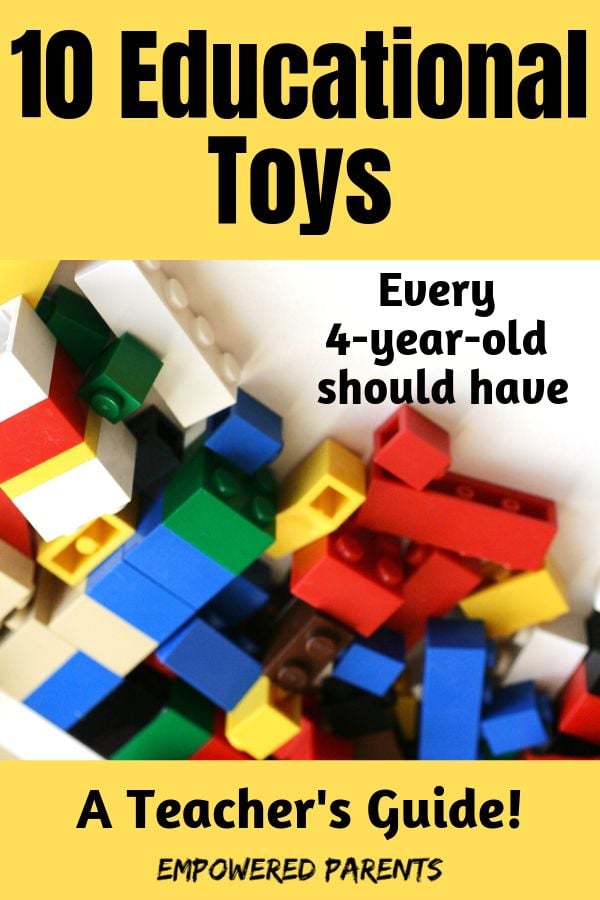

Nita
Friday 2nd of June 2023
My granddaughter doesn't like to build blocks or do puzzles. How can I motivate her
Tanja Mcilroy
Tuesday 6th of June 2023
Hi! This is normal as children usually have varied interests. My 4-year-old never liked puzzles, now she does them all day, but she refuses to draw! The best thing you can do is to make puzzles and blocks accessible, and maybe play with them yourself sometimes because she might join in. Try not to ask her repeatedly or she will avoid them even more. It depends on her age also. If she is 5 and won't do a puzzle, perhaps she is struggling. Start with very basic puzzles and let her achieve success many times before you introduce more challenging ones. Unless there is an underlying problem (Is she struggling in multiple areas?), you will probably find that she will start doing them when she's ready, as well as building with blocks. Some kids just have preferences and will always veer more towards one type of activity than another.
Kami
Thursday 2nd of March 2023
Hello, a good site for the development of children. My kids love it and are always interested.
Tanja Mcilroy
Monday 6th of March 2023
Thanks, Kami!
Rams Mohlamonyane
Saturday 4th of June 2022
Please sent me complete catalogs for all ten categories. I need them asap.
Tanja Mcilroy
Monday 6th of June 2022
Hi there, if you click on the links in the article it will take you to the Amazon website to show you an example of each product. I am only able to link to one website so have chosen Amazon as the most number of people around the world will have access to it but you may want to find similar items on a local website or Amazon in another country. Regards, Tanja
Donald
Wednesday 16th of March 2022
Toys for 5 year olds
This website really helps I love it